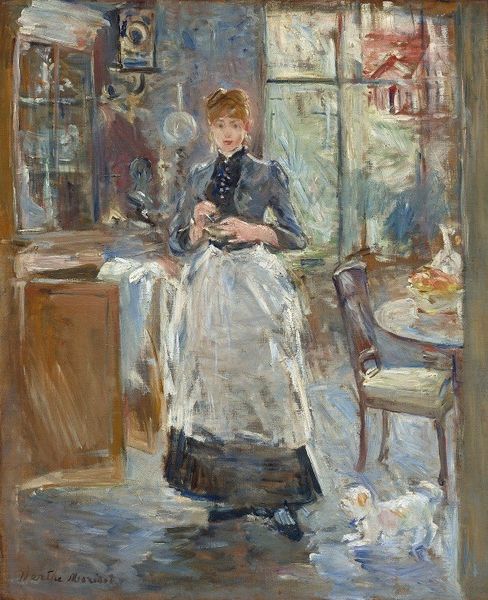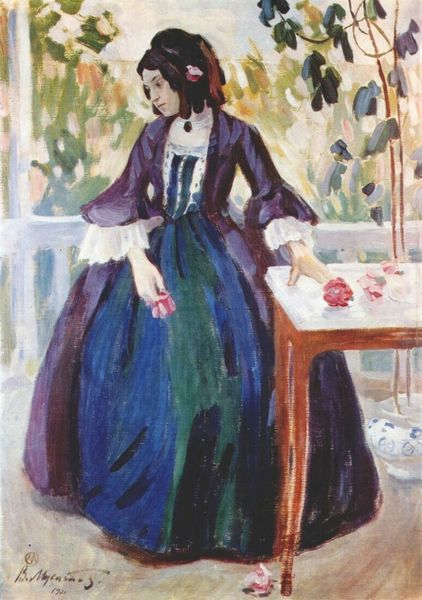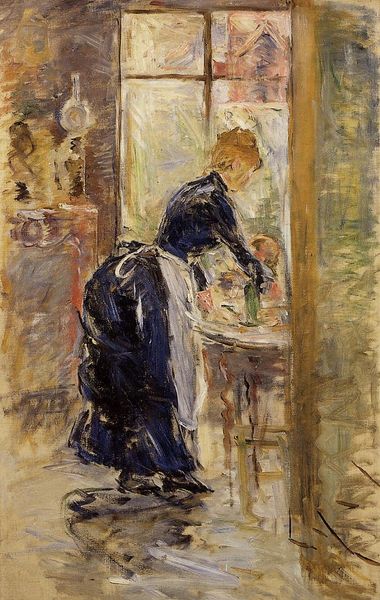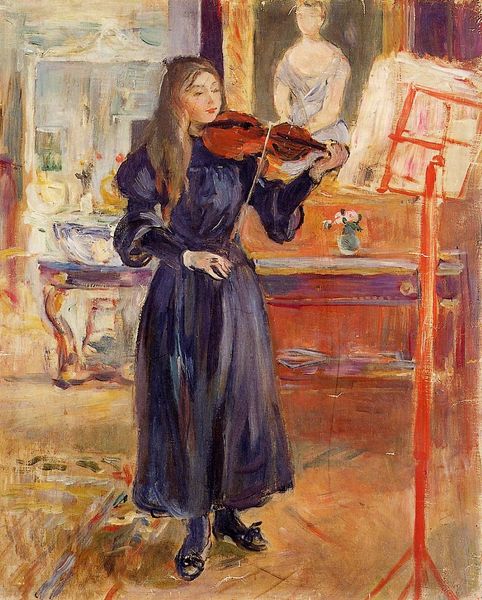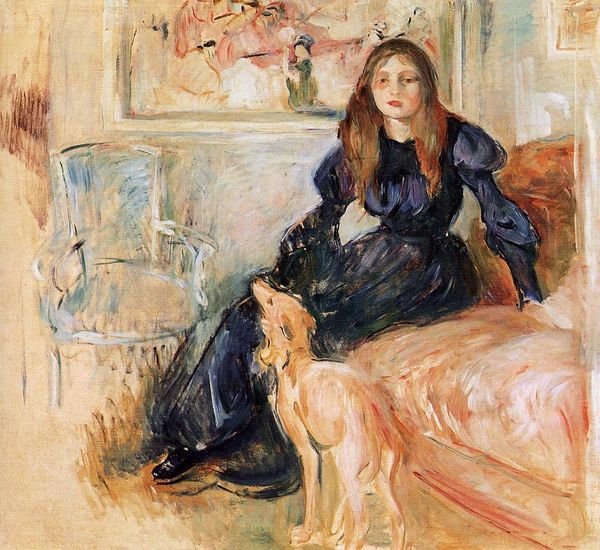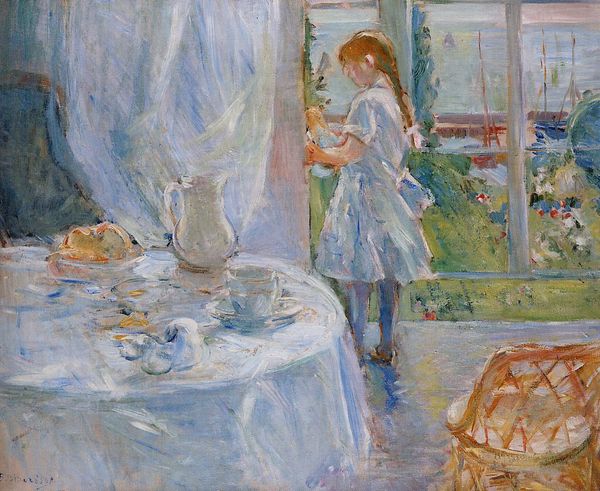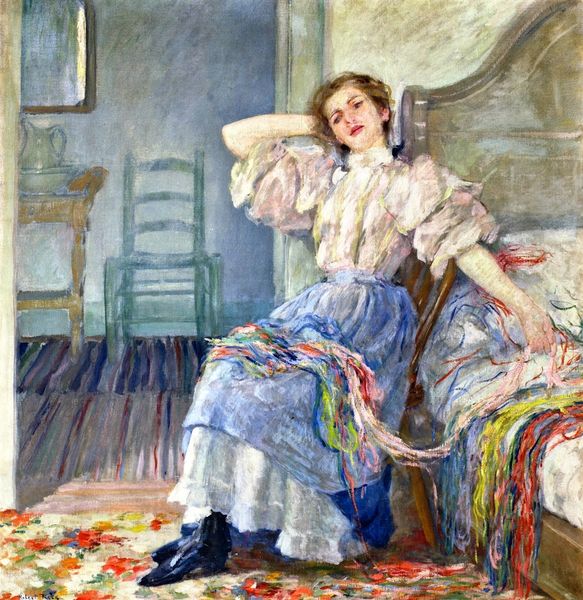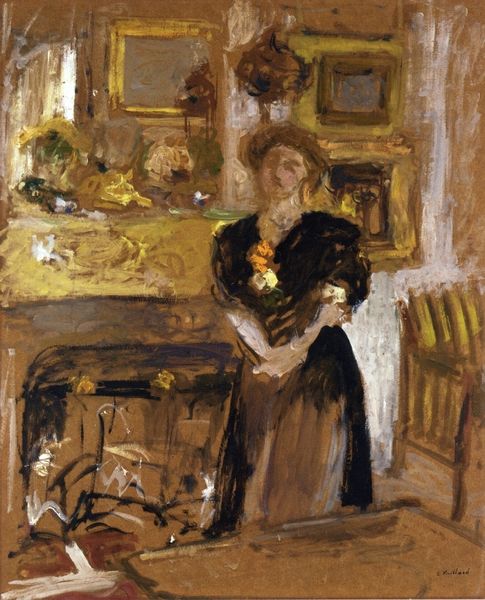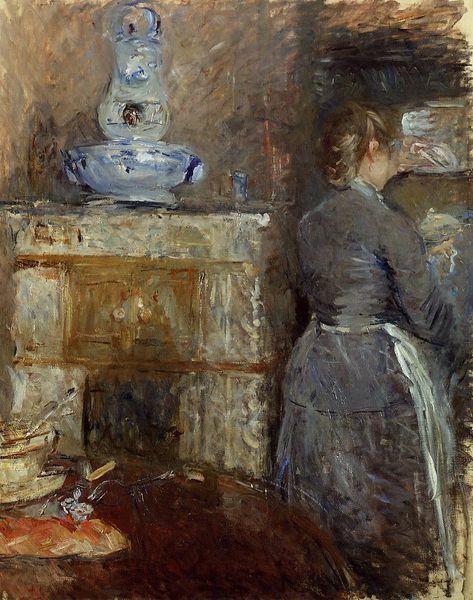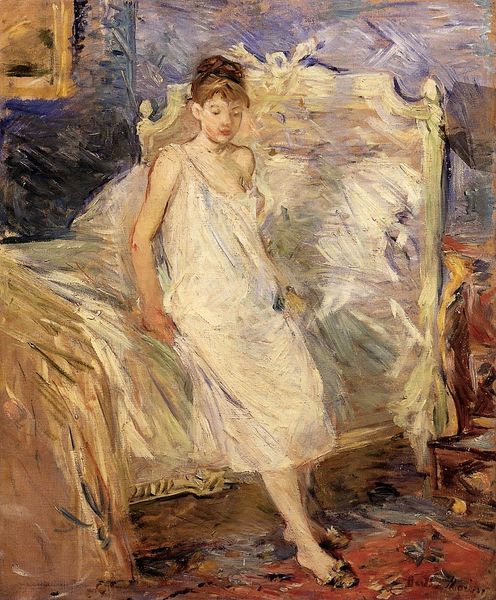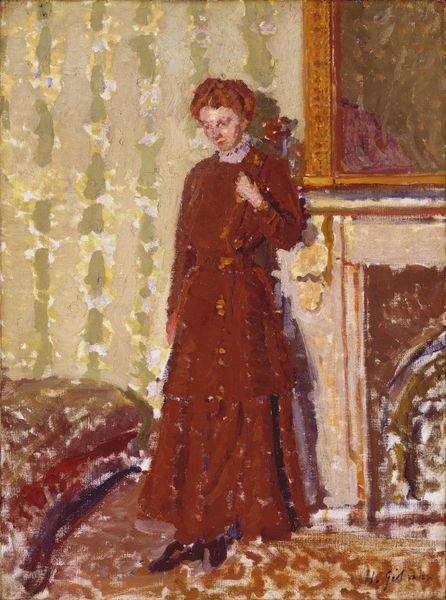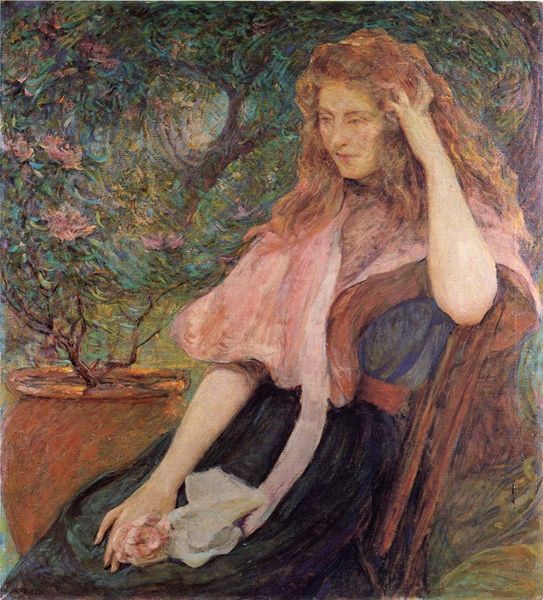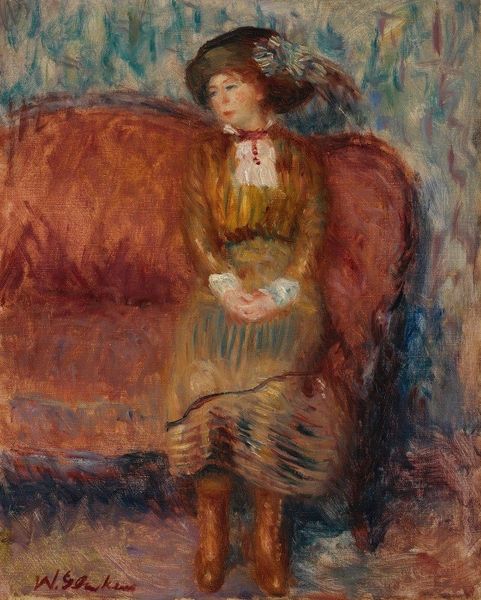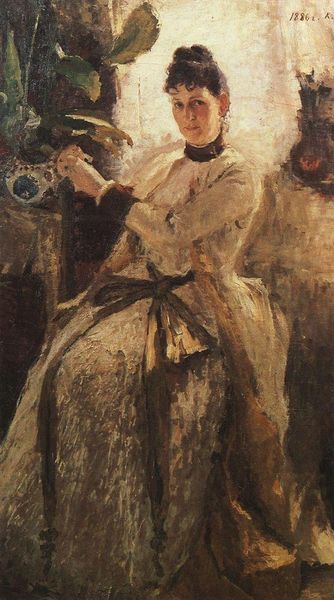
#
portrait
#
abstract painting
#
impressionist landscape
#
possibly oil pastel
#
oil painting
#
famous-people
#
neo expressionist
#
acrylic on canvas
#
underpainting
#
painterly
#
painting painterly
#
lady
#
female-portraits
#
expressionist
Copyright: Public domain
Curator: I find myself completely drawn into the intimate space depicted in "Julie Playing a Violin." Painted in 1893, Berthe Morisot offers us a glimpse into the life of a young woman surrounded by the comforts of home. Editor: Immediately, I sense a certain melancholy. The soft, almost blurry, edges evoke a feeling of introspection, as if we are catching Julie in a private, almost dreamlike, moment. It certainly pulls at something deep. Curator: Absolutely. Morisot was moving in circles that prized a certain amateur musicianship among young ladies, and we might also view this as a type of ‘leisure-class’ portrait of the time. It reflects the social expectation of women cultivating artistic hobbies. Editor: Looking closer, the violin itself is intriguing. Throughout history, stringed instruments—and violin, specifically—often symbolize harmony, passion, even a longing for connection. I wonder what kind of feelings Morisot aimed to communicate. What’s truly unique to me, is how this particular rendering lacks the boldness found in renditions of Paganini, instead adopting gentler strokes of interiority. Curator: I agree it projects quiet interiority, but the institutional realities for female artists often meant capturing scenes of domestic life. And if Julie’s feelings seem ambiguous, we might consider it more about the politics of representation in that era—and that art served certain gender expectations. Editor: Perhaps...and that ambiguity might add even greater emotional complexity! Because regardless of its circumstances, Julie looks like she may well have struck a dissonant chord. She is fully swathed, and in shadow. But still she plays. What do you imagine? Curator: To me, Morisot has also struck a powerful chord, one that continues to resonate within the complex and shifting currents of cultural and art history. Editor: Yes, one we might carry forward, just as the melodies endure, shaped by both joy and sorrow.
Comments
No comments
Be the first to comment and join the conversation on the ultimate creative platform.
